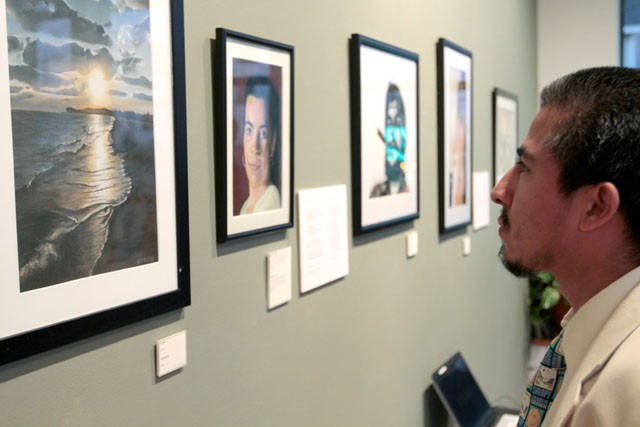What: From My Altitude
When: Through Nov. 30
Where: Homewood Studios, 2400 Plymouth Ave. N.
Nationalism is a sentiment that can be a hard sell on the current generation. Among the sea of leftist American boys and girls, an unabashedly prideful approach to the red, white and blue can appear as more of a closed-minded personal attribute than one of admiration. But for better or worse, this place is home.
Such a character trait is not lost on Antonio Guerrero, the artist whose work comprises Homewood StudiosâÄô âÄúFrom My AltitudeâÄù exhibition.
Guerrero comes from a contrasting side of this patriotic fervor. And he wonâÄôt be in a position to attend any opening galleries either. Guerrero is one of the âÄúCuban Five,âÄù a group of Cuban nationalists who are currently serving varied levels of prison sentences for alleged acts of espionage against the United States. Guerrero, a Cuban American, is currently serving a 22-year prison sentence in Colorado.
However, the galleryâÄôs collection does not appear overtly political. Guerrero, who did not pursue art until his incarceration, works from a variety of creative vantage points. His choice of media dances from pastel to oil to airbrush to pencil. His subjects are both human and natural. While the landscapes comprise a sort of idealized realism, it is their juxtaposition with GuerreroâÄôs stark still-life pieces that allow for the greatest thematic resonance.
âÄúWe tried to curate the show and hang the show, so that as youâÄôre moving through it, you are getting a sense of what is his real view and what comes when he closes his eyes,âÄù Beverly Roberts, who co-owns and operates Homewood Studios with her husband, George, said.
It is such a deliberate arrangement that allows these themes of homeward lament to surface. A pastel image that almost appears as a studio nude study hangs next to a cold still life of GuerreroâÄôs prison uniform. He paints his cell door, cold and flat against the canvas. However, the image is only obliterated by the contrasting image of an endless pier at dusk.
âÄúI selected those in order to continue that same idea of what it means to be in prison and how can one not be imprisoned,âÄù George Roberts said.
While Homewood StudiosâÄô presentation unquestionably elevates the impact of GuerreroâÄôs individual works, there still remains some implicit dichotomy recognized by Guerrero. His prison still-life work is meticulously crafted while the landscape and portrait details are considerably diffused.
Some of the most substantially soft instances come through the airbrush images of Che Guevera and Fidel Castro. These directly political representations, however, are not intended to apply agenda within the exhibition. The studio maintains an objective approach.
âÄúIâÄôm interested in a more complete conversation rather than a political rally atmosphere,âÄù George Roberts said.
The innocence of these men, after all, is a point of political contention. A substantial number of states in the country have active lobbyist groups for exoneration of the âÄúCuban Five.âÄù While the Minnesota Cuba Committee is sponsoring the exhibition, Beverly Roberts insists that the scope of GuerreroâÄôs work is greater than his relative national loyalty.
âÄú[His work] is just like if you and I were in prison,âÄù she said. âÄúWhat would be in our dream state? I donâÄôt think it would be a flag. It would be the woman that you love and the places you remember.âÄù
Viewing GuerreroâÄôs work, such ideals do tend to arise. The pieces do not reiterate some sort of nationalist creed. Guerrero is a man who is locked far and away from home, and itâÄôs clear that he misses it terribly. ItâÄôs a basic sort of love, and its one often forgotten about until it is gone.








